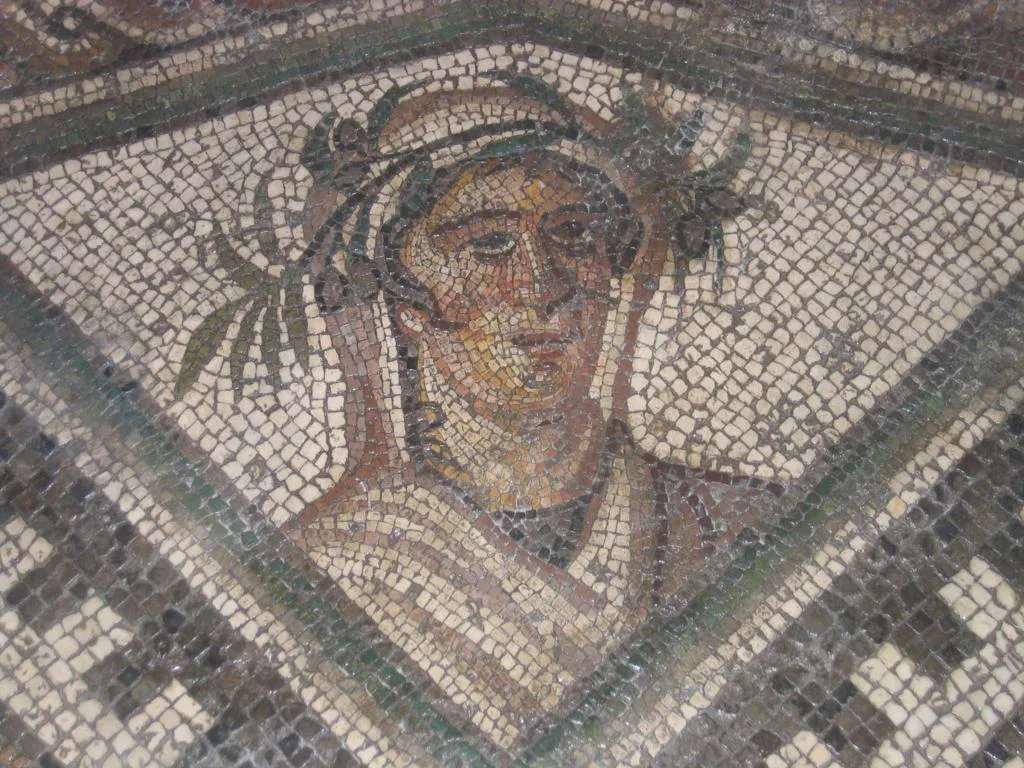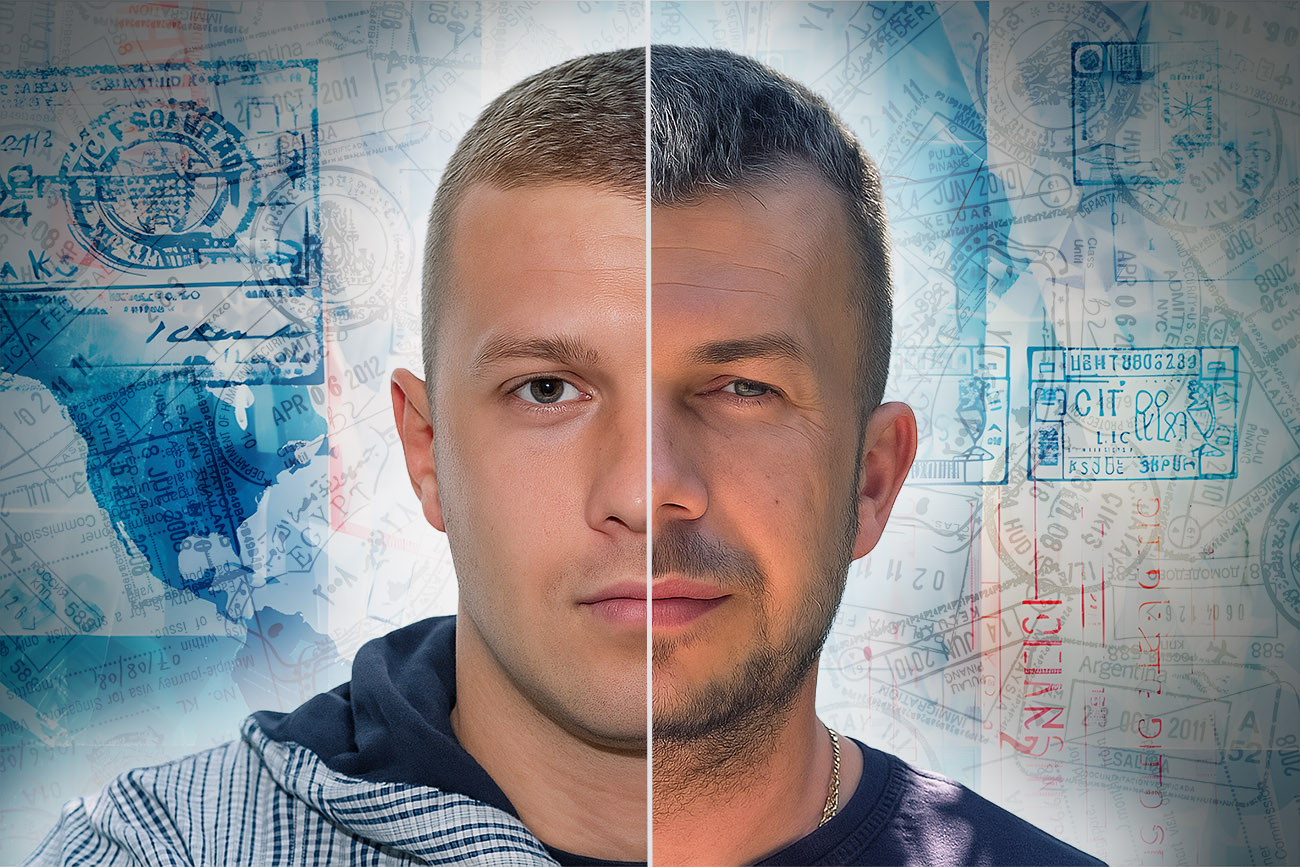In Croatia, 350,000 tourists paid one million KM to visit the first century A.D. amphitheater in Pula last year.
The Pula Archeological Museum, which manages the site, increased the profit by millions of KM with film and music festivals, and other cultural events organized in the amphitheater, according to museum director Kristina Mihovilić.
Meanwhile, in BiH, for years Miran Gudelj has been discovering tantalizing remnants of jars, vases and mosaics in his backyard in the village of Mošunj near Vitez.
Don't want to miss our stories?
Sign up for our newsletter.
Don't want to miss our stories?
Sign up for our newsletter.
Gudelj alerted authorities and then waited for them to begin a serious excavation of his discoveries. When a serious excavation never materialized, Gudelj simply reburied his amateur archeological site.
Local writer and historian Anto Zirdum has done his own informal investigation. He believes the settlement of ‘Bistua Nova’ the 4th century seat of the Catholic diocese, is buried below Mošunj.
But unlike Pula, in Mošunj, what could be a piece of BiH’s ancient heritage, and a potential source of tourism income and jobs, remains entombed by BiH authorities’ lack of money and will.
‘Everything that is found is excavated and then buried again…’ said Zirdum. ‘Everything is left undiscovered and unexploited.’
The Mošunj site is only one example of BiH’s heritage ignored or destroyed from neglect, which was discovered in an inquiry by a team of journalists from the Center for Investigative Journalism (CIN) in Sarajevo. The team found unexploited economic opportunities in BiH culture from filmmaking to unexcavated ancient sites. In a series of seven stories, the team examines the state of BiH’s cultural heritage.
The inquiry began because of recent news coverage of museums closing and sites falling into disrepair, which has provoked little response from the public. But the team found that BiH citizens may be overlooking economic opportunities from a heritage they and their children are not even aware is slipping away forever.
Last December, the High Representative, Paddy Ashdown, reminded the Council of Ministers of their responsibility under the Dayton Accords to keep museums open and protect the entire BiH heritage. An OHR follow-up statement said it was not only a moral issue.
Museums and other institutions ‘are not being used – as they should be being used – as valuable resources in the tourism sector and in projecting a positive image of BiH’ according to an OHR statement.
Archeologists and tourism officials agree that although a lack of funding is an important cause of the deterioration of BiH’s historical legacy, there are other problems that could be overcome simply by organization and determination.
‘Take for example Italy, Greece and Egypt’ said history professor Enver Imamović, an expert in Roman archeology from the University of Sarajevo. ‘These countries are living from the earnings coming from cultural and historical tourism.’
But experts like Imamović, who can determine the origin and value of historical sites and objects, are in short supply. And even when a site like Gudelj’s is discovered there is an expensive bureaucratic process that frustrates any further work, according to archeologists.
There is also little initiative from the tourism industry to change the process because no one sees any value in the sites. Culture is often seen as something that should be provided for free even if it means leaving museum doors locked.
Most tourism agencies are promoting BiH tourism abroad rather than attracting foreign tourists to spend their money in BiH. When it comes to marketing what BiH might have to offer, tourism officials have few ideas.
New ideas such as Sarajevo’s ‘bloody tourism’ tours of recent war sites, are considered politically unacceptable despite the high foreign tourist demand for war related information.
The exploitation of even recognized sites like the Mostar Bridge is the focus of battles over politics rather than business strategy.
Meanwhile, BiH citizens are losing a valuable industry according to tourism and culture experts.
‘Millions could be made’ said Professor Imamović. ‘There would be profits bigger than those of some profitable companies.’
A look at neighboring countries like Croatia show economically what could be at stake.
Across the world, tourism makes $470 billion USD a year, according to the OHR.
In the first nine months of 2004, Croatia took in $372 million USD from ‘cultural tourism’ visits to sites like museums and excavations, according to the Croatian Chamber of Commerce. In the same period, BiH made only $5 million USD, according to the School of Economics at Sarajevo University.
Meanwhile, many of BiH’s ancient sites far better known than Mošunj, lie unused, deteriorating and threatened by new construction projects, according to Imamović.
The locations with the best potential for tourism sites include the medieval seat of Bosnian kings at Arnautovići near Visoko, Imamović said. A collection of four churches, which were the site of the coronation of Bosnian kings, surrounded by ancient cemeteries are still standing but in an advanced state of deterioration.
‘The area is totally neglected and left to its own destiny’ Imamović said.
Also on Imamović’s list of potential moneymakers is the medieval fortress at Bobovac. The hilltop castle surrounded by woods fell to the Ottomans in 1463, which signaled the end of the medieval Bosnian state. Now the castle stands open but neglected without anyone to manage the site, according to Milo Jukić, a historian and a journalist from Kreševo.
Imamović’s sites are included on a list of national sites compiled by the state level Commission for Preservation of National Monuments.
Since its inception, the commission has been in a power struggle with entity cultural institutes, primarily because restoration funding is provided by entity governments, which don’t necessarily agree with the commission’s historic designations. (See “Losing Culture” story)
Other valuable archeological sites on the list include Stolac, Gabela near Čapljina, Ošanići near Stolac, Korića Han in Gračanica, Ripač near Bihać, and Zavala near Ravno. But nothing is being done to restore and preserve them, according to Dubravko Lovrenović, former president, and now a member of the commission.
Potential tourist sites on the list are in danger of being lost forever.
For example, a building boom of summer houses on the Gračanica plateau and its eastern slopes is threatening the ancient village of Korića Han, which has managed to survive since the end of the Neolithic period, somewhere between 5000 and 2500 BC.
Meanwhile, it is impossible to get tourists interested in places like Mošunj or other sites because there have been no systematic excavations of the sites, and there has been no preservation of the artifacts that have been found by chance, said Žarko Bošnjak, a veteran tourism official from Vitez.
Bosnian citizens, let alone foreign tourists, know little about the amateur discoveries made in Mošunj in the last twenty years because of the lack of an organized excavation.
Residents have found artifacts in about twenty locations in the village, including relics from Roman, Illyrian, and early Christian times, Bošnjak said.
Graves, jewelry and a bronze sword from the tenth century, the image of which is now part of the Vitez town coat of arms, were discovered by residents like Miran Gudelj.
While digging in his garden, Gudelj discovered remnants of jars, vases and mosaics, some of which later went to the town museum.
While Pula pumped a million KM in profits back into restoration of its amphitheater last year, Mošunj did not even open its museum to the public, let alone charge admission. Gudelj said that he never thought about going into business for himself, keeping the relics and trying to sell tickets to his garden to curious visitors.
Imamović said even managers of restored Bosnian sites seem to think about profit as an afterthought.
When he took his history students to the medieval fortress at Jajce recently, Imamović said the management sold tickets and told him they would use the money for restoration.
‘That money was not significant’ Imamović added. ‘But why don’t they organize similar (paying group) visits all year long?’
At least one expert did eventually go to Mošunj to investigate the numerous claims of found artifacts.
After visiting the village, Snježana Vasilj, an archeology professor at the University of Sarajevo, said she asked local officials to get her the permission for excavations at some of the sites. She was willing to work without compensation, but she never got the permission.
Meanwhile, author Anto Zirdum is the only one making money on the Mošunj discoveries from his books on the area, ‘The Chronicle of Bistua’ and ‘The Saga of Two Swords.’ Zirdum, who works for the Croatian cultural association, Napredak, said the books provide a modest supplemental income with a price of 10 KM each.
In Kreševo, near Mošunj in Srednjebosanski Canton, Ante Buzuk has much more evidence of hidden cultural treasure. The president of Kreševo’s Association for the Preservation of Cultural, Historical and Natural City Values, said he has uncovered evidence of an ancient city water supply system and five fireplaces with pottery from another era.
But Buzuk has run into the same problems as the discoverers in Mošunj.
‘Since 2001 I keep finding things but no one is willing to come and work further on it’ Buzuk said.
Žarko Kesić, head of the Society Department in Kreševo, admits the village’s doesn’t know how to make money out of its cultural potential.
‘We have various objects but we have not put them to use’ Kesić said. ‘What should we do with them? We cannot use any of it.’
Many cultural experts understand Kesić’s frustration. Even if archeological and historical experts were organized to restore sites, some government and private tourism officials seem at a loss as to how to profit from them.
The Minister of Culture in Srednjebosanski Canton, former history professor Nikola Lovrinović, sees cultural heritage as a luxury expense, not as a priority for economic investment or as a possibility for creating new jobs.
‘As a person from the area of culture, I could say that we should invest in (cultural sites) but when we have thousands of unemployed, we have to remember priorities’ Lovrinović said. ‘What would all these poor people say about this (idea)?’
Nihad Korić, director of the Tourist Association of Srednjebosanski Canton, scoffs at the idea that whatever lies beneath Mošunj might be a future source of tourist income.
In any case, the association would not be the institution to investigate Mošunj, Korić added. It only participates in events suggested by others because of a lack of funds. Last year, the association’s only solo achievement was planting flowers in Travnik.
In Zapadnohercegovački Canton in Herzegovina the president of the Tourist Association, is as frustrated as anyone.
The canton has a classical Roman villa in Mogorjelo near Čapljina, and in Mostar a synagogue built in 1899, both of them undeveloped.
‘The problem is that we don’t know how to sell what we have,” said association president Marinko Brkić. “We need to reconsider the role of marketing. We hear objections that culture is simply culture and should not be for sale.”
For example, Brkić said, the oldest museum in BiH is in Ljubuški where he lives. The museum contains the country’s first written artifact, the “Stone from Hum,” an inscribed cornerstone from an 11th century church. The museum is run by Franciscans who do not charge an admission.
‘One of the main problems in Bosnia and Herzegovina tourism is the lack of experts,” Brkić said. “We have a potential for tourism but we lack tourist managers who would promote them accordingly.’
In Sarajevo, probably the country’s most important tourist destination,
government and business authorities cannot agree on how to market cultural destinations.
‘If the mafia cooperates superbly, why can’t tourist professionals do the same?’ said Zijad Jusufović, who is considered a renegade by most Sarajevo tourism officials for his ‘bloody tourism’ tours of war related sites around the city.
Whether they like Jusufović or not, many of the city’s tourism entrepreneurs are asking the same question.
Zoran Bibanović, the president of the Association of Tourist Agencies in BiH, said that he does not know either when a festival takes place in town or the festival’s schedule. There is no database of events or any basic organization, Bibanović complained.
‘We have a tourism industry but no tourism policy’ said Bibanović.
Vera Šarić, from the Tourist Association of Sarajevo Canton, said that agencies should use their own initiative to find event information for their tour packages from the canton’s cultural information center.
Meanwhile, the directors of two of Sarajevo’s biggest festivals, the film festival and the winter festival, said they cannot get tourist agencies interested in promoting their events.
Mirsad Purivatra, director of the Sarajevo Film Festival, said he is surprised that hotels in Sarajevo do not take advantage of the festival by raising prices and offering package deals. For example, during the Cannes Film Festival you have to book a room for a week or more at a higher price, Purivatra said.
‘Tourist agencies are not yet capable of doing their job,” concluded Ibrahim Spahić, the director of the Sarajevo Winter Festival.
Spahić and others said that the tourism industry is primarily focused on sending Bosnians abroad rather than attracting foreign tourists to BiH.
Out of 174 tourist agencies in BiH, only approximately 10 percent of them work to bring tourists to Bosnia, according to Brkić, the Zapadnohercegovacki canton tourism official.
“All other (agencies) are taking the tourists abroad…,” Brkić added. “That is the heart of the problem.’
Artisans in the ancient Baščaršija section of Sarajevo, which was one of the city’s principal tourist attractions before the war, complain that their profit is also suffering from poor tourist promotion.
‘From foreigners, I earn a maximum of one hundred KM every three days…’ said vendor Ferida Ahmetašević who sells souvenirs. ”Once we used to make in a day the amount of money we make now in a month’s time.’
Ismet Alagić, a coppersmith, believes that a poor image of the country keeps tourists away.
‘Who would visit our country, when media only talk about a country which came out of the war and which is unable, for ten years, to put war criminals behind bars’ Alagić said angrily.
But Jusufović, the bloody tourism operator, thinks it is just a matter of creatively dealing with the image you have, and recognizing what tourists want.
Jusufović’s tours include visits to fugitive Bosnia Serb war leader Radovan Karadžićs home in Pale and the nearby villages in Montenegro where his friends and family live.
The tourists Jusufović sees are fascinated by the city and by the recent war. So that is what he gives them, “bloody tourism,” as he calls it. The tour costs tourists almost one thousand KM.
‘Foreigners want to know the real situation and to hear an independent opinion about it all’ said Jusufović. ‘I am ready to do all it takes, to show them everything.’
But traditional tour operators like Emir Pirić, director of the Magelan Agency, and Vedran Janković of The Pearl of Azur agency, both in Sarajevo, believe Jusufović’s tours are unethical and immoral.
‘I could understand if this was done by Pale (RS) tourist operators because for them Radovan Karadžić is a national hero, not a war criminal’ Pirić said.
But Imamović, the history professor, sees the war as just another part of BiH culture and history, which should be used for tourism. Sites like the airport tunnel through Bosnian Serb lines that kept the city alive during the war, are cultural gold mines to Imamović.
“There is not one tourist visiting Sarajevo who wouldn’t want to visit this site, go through the tunnel, visit the museum and eat a war ration,” Imamović said.
On one of his recent tours, Jusufović added a stop in Zenica to let American tourists meet the mujahadeen, the foreign fundamentalist fighters from the Bosnian war, who are infamous in the US.
“It is hard for an American to resist the temptation to talk with them if he knows that he’ll get back alive and kicking,” Jusufović said.
The same aggressive marketing could work for the country’s financially troubled cultural institutions, according to Jusufović.
Until recently the National Museum in Sarajevo was closed for lack of funds. Another five national institutions, the University and National Library of BiH, the Blind and Weak-eyed Persons Library, the Art Gallery of BH, the Literature and Theater Museum, and the BiH Film Archive are in dire financial situation.
But a varied group of experts, including FBiH Culture Minister Gavrilo Grahovac, archeologist Vasilj and Jusufović believe that the museums’ budget problems come primarily from mismanagement.
The 116 year-old National Museum, the oldest cultural and scientific institution in the country, had 10,000 visitors last year before it closed in November, according to museum director Dr. Aiša Softić.
At ticket prices from one to ten KM, and no visiting exhibitions to bring extra income, Softić said, there is no way the museum can pay for itself.
‘I’m not running away from the fact that the management needs to be modernized with its staff trained, but we are forgetting that there is no tradition of going to cultural institutions in this country,” Softić said. “There is not one museum in the world that can finance itself.’
But Jusufovic said some new ideas could make the difference.
He would apply the same initiative to market the museums that he is using to promote bloody tourism, including advertising brochures in hotels, updated websites and email promotions sent to the addresses of foreign companies.
Other tour operators concentrate on showing the cultural or political view of one ethnic group, Jusufović said. The only way to make culture into a successful business, however, is to promote the country as a whole, he added.
‘Give me the national museum and I will pay for the staff salaries and I will promote BiH culture around the world’ said Jusufović.
But the fate of the major cultural institutions may have as much to do with politics as it does with marketing.
After the OHR’s warning late last year that the closing of Sarajevo’s national museums and libraries was a violation of the Dayton Accord, the state parliament and Sarajevo Canton came up with 1.9 million KM to reopen museum doors.
The National Museum was reopened earlier this month and the Historical Museum is scheduled to reopen soon, according to Civil Affairs Minister Safet Halilović. But the funding solution is only temporary until the state and entity governments solve their differences on who is responsible for protecting cultural heritage (See story “Losing Culture” ).
Politics are also strangling potential profit from a historic site that helped put BiH back on the map after the war.
‘The Old Bridge is a cash cow that no one knows how to profit from’ said Rusmir Čišić, the director of the municipal commission that coordinated the rebuilding of the bridge in Mostar.
An estimated 150,000 visitors, including foreign tourists, came to the opening of the newly restored bridge last July. But the city failed to profit from the event other than souvenir and restaurant sales, Čišić said.
The biggest problem is that city officials are more interested in the politics of the divided city than in stimulating tourism, Čišić said.
For two years the World Bank has tried unsuccessfully to establish a functioning oversight agency that represents both the Bosniak and Croat parts of the city.
The city council created the agency but did not hire anyone to run it. The agency would oversee rental of business premises, promotion of historic Mostar, and preservation of the Old Bridge. The establishment of such a body is one of UNESCO’s conditions for including the Old Bridge on the UN’s list of world attractions.
The usual benefit of UNESCO approval of any site means an instant increase in tourism and a stronger economy for the area, according to Siniša Šešum from UNESCO’s office in Sarajevo.
Čišić said that there is no political willingness to establish the agency. It would be easier to get agreement on the agency if it was split into two ‘one in Mostar East and another in Mostar West’ Čišić said sarcastically.
The former mayor, Neven Tomić, who signed the decision to establish the agency, agrees with Čišić.
‘No one tries to make a cash cow out of the Old Bridge’ Tomić said. ‘They all care only about their political positions.’
There is one tourist agency with a business plan that ignores politics and concentrates on making money.
It was started by an American, Tim Clancy, who traveled widely in BiH when he worked for an NGO. Clancy was stunned by the beauty of the country and decided he could sell it to tourists from around the world, according to his partner Thierry Joubert.
Clancy started Green Visions, a tourist agency, with another American, Darin Spurgeon, Dutchman Joubert, and Bosnian Alen Lepirica four years ago.
‘We have nothing in common with other tourist agencies in BiH,” said Joubert. “The difference is that they export people, while we import them.”
The first question foreign tourists always ask is if BiH is a safe place to visit. Green Visions has answered that question by creating a tourist guide that emphasizes what BiH has to offer.
‘We make no difference between the RS and the Federation’ Joubert said. ‘…We understood that the BiH (tourist) image had to be changed.’
























